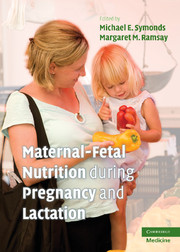Crossref Citations
This Book has been
cited by the following publications. This list is generated based on data provided by Crossref.
Black, Andrew P
Brimblecombe, Julie
Eyles, Helen
Morris, Peter
Vally, Hassan
and
O′Dea, Kerin
2012.
Food subsidy programs and the health and nutritional status of disadvantaged families in high income countries: a systematic review.
BMC Public Health,
Vol. 12,
Issue. 1,
Rezaeian, A
Ghayour-Mobarhan, M
Mazloum, SR
Yavari, M
and
Jafari, SA
2014.
Effects of iron supplementation twice a week on attention score and haematologic measures in female high school students.
Singapore Medical Journal,
Vol. 55,
Issue. 11,
p.
587.
McFadden, Alison
Green, Josephine M
Williams, Victoria
McLeish, Jenny
McCormick, Felicia
Fox-Rushby, Julia
and
Renfrew, Mary J
2014.
Can food vouchers improve nutrition and reduce health inequalities in low-income mothers and young children: a multi-method evaluation of the experiences of beneficiaries and practitioners of the Healthy Start programme in England.
BMC Public Health,
Vol. 14,
Issue. 1,
2015.
Nutrition, health and disease.
p.
61.
Savard, Claudia
Lemieux, Simone
Lafrenière, Jacynthe
Laramée, Catherine
Robitaille, Julie
and
Morisset, Anne-Sophie
2018.
Validation of a self-administered web-based 24-hour dietary recall among pregnant women.
BMC Pregnancy and Childbirth,
Vol. 18,
Issue. 1,
Savard, Claudia
Lemieux, Simone
Carbonneau, Élise
Provencher, Véronique
Gagnon, Claudia
Robitaille, Julie
and
Morisset, Anne-Sophie
2019.
Trimester-Specific Assessment of Diet Quality in a Sample of Canadian Pregnant Women.
International Journal of Environmental Research and Public Health,
Vol. 16,
Issue. 3,
p.
311.
Lebrun, Audrée
Plante, Anne-Sophie
Savard, Claudia
Dugas, Camille
Fontaine-Bisson, Bénédicte
Lemieux, Simone
Robitaille, Julie
and
Morisset, Anne-Sophie
2019.
Tracking of Dietary Intake and Diet Quality from Late Pregnancy to the Postpartum Period.
Nutrients,
Vol. 11,
Issue. 9,
p.
2080.
Savard, Claudia
Lebrun, Audrée
O’Connor, Sarah
Fontaine-Bisson, Bénédicte
Haman, François
and
Morisset, Anne-Sophie
2021.
Energy expenditure during pregnancy: a systematic review.
Nutrition Reviews,
Vol. 79,
Issue. 4,
p.
394.
Dingena, Cassy F
Mahendra, Anvesha
Holmes, Melvin J
Clement, Naomi S
Scott, Eleanor M
and
Zulyniak, Michael A
2023.
Protocol for the INFORMED (Individualised Patient Care and Treatment for Maternal Diabetes) Study: a randomised controlled trial embedded within routine care.
BMJ Open,
Vol. 13,
Issue. 2,
p.
e065388.





